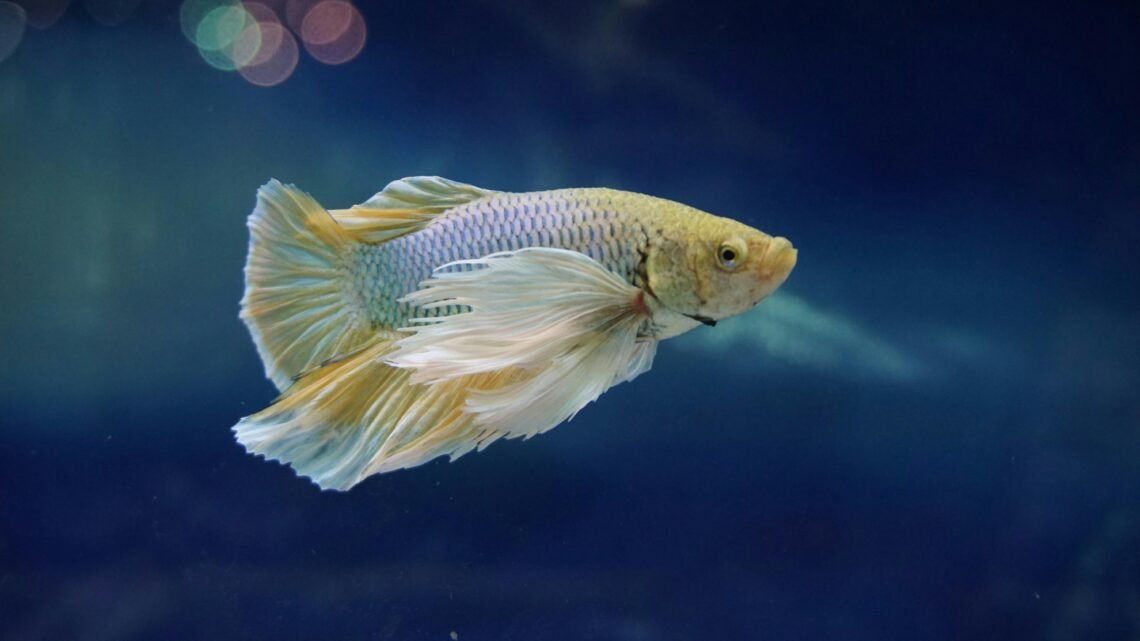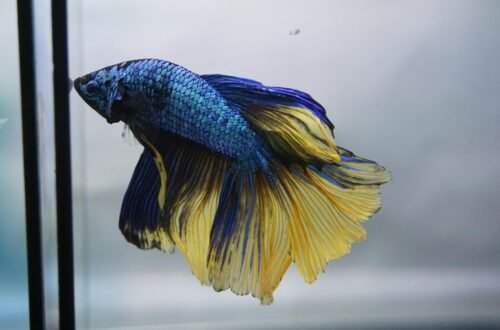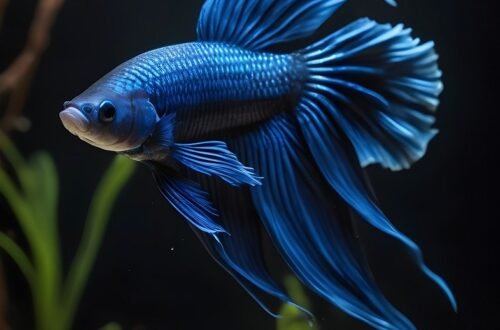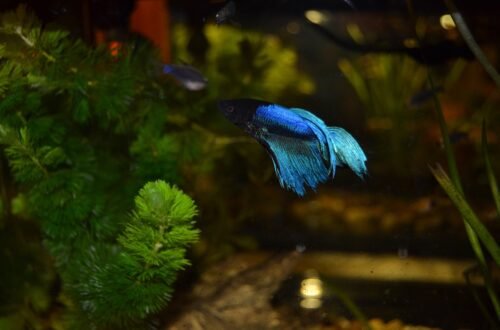Feeding your Betta fish the right food is essential to its health, longevity, and vibrant colors. Bettas are carnivorous fish, which means they require a diet rich in protein to thrive. With so many different types of fish food on the market, it can be overwhelming to decide what’s best for your Betta. In this comprehensive guide, we’ll explore the different types of Betta fish food, their nutritional needs, and tips on feeding to ensure your Betta stays healthy and happy.
Understanding Betta Fish Dietary Needs
In the wild, Betta fish are carnivores that primarily feed on insects, larvae, and small invertebrates. Their natural diet is high in protein and low in plant-based matter, which means that a Betta’s digestive system is designed to process meaty, high-protein foods.
To mimic their natural diet in captivity, you’ll need to provide your Betta with protein-rich foods that support their growth, immune system, and coloration. Betta fish food should contain high-quality ingredients that promote a balanced diet.
Types of Betta Fish Food
There are several different types of Betta food available, each with its own advantages and drawbacks. Let’s explore the most common types and what they offer your Betta.
1. Betta Pellets
Pellets are one of the most common types of Betta food and are specifically formulated to meet their nutritional needs. High-quality Betta pellets contain a balanced mix of proteins, fats, and essential nutrients that support healthy growth and vibrant colors.
- Why pellets are popular: They are convenient, easy to store, and formulated specifically for Bettas. Look for pellets where the first ingredient is a high-protein source, such as fish meal or shrimp meal.
- How much to feed: Bettas have small stomachs, so feed them 2-3 pellets twice a day. Make sure the pellets are small enough for your Betta to eat easily, and avoid overfeeding, as uneaten food can spoil the water.
Tip: When choosing Betta pellets, avoid brands with fillers like wheat or corn as primary ingredients, as these are harder for Bettas to digest and provide little nutritional value.
2. Freeze-Dried Foods
Freeze-dried foods are a convenient and nutritious option for Bettas. Common freeze-dried foods include bloodworms, brine shrimp, and daphnia—all of which are favorites of Betta fish. These high-protein foods can be used to supplement their pellet diet.
- Why freeze-dried foods? Freeze-dried options retain much of their nutritional value and are safe from parasites, unlike live foods. They are a great source of protein and help mimic a Betta’s natural diet.
- How much to feed: Feed freeze-dried foods in moderation, about 2-3 times a week, as a supplement to their regular diet. Always soak freeze-dried foods in water for a few minutes before feeding to prevent digestive issues like bloating.
3. Frozen Foods
Frozen foods like bloodworms, brine shrimp, and daphnia offer a more natural, protein-packed option for Bettas. They are closer to what Bettas would eat in the wild and provide excellent variety in their diet.
- Why frozen foods? Frozen foods retain their nutrients and provide enrichment, as Bettas often exhibit more active behaviors when hunting for food. These are great for boosting your Betta’s health and coloration.
- How much to feed: Offer frozen foods 2-3 times a week, thawing them first in tank water before feeding to your Betta.
Tip: Rotate between different types of frozen foods to give your Betta a well-rounded diet.
4. Live Foods
Live foods like brine shrimp, bloodworms, and microworms are the most natural option for Bettas and are highly nutritious. Feeding live food stimulates a Betta’s hunting instincts and provides excellent enrichment.
- Why live foods? Live foods are packed with protein and nutrients and help keep your Betta active and engaged. However, they can be more challenging to source and require proper handling to avoid introducing parasites into the tank.
- How much to feed: Feed live foods in moderation, about once or twice a week. Make sure to source live foods from reputable suppliers to avoid introducing diseases.
5. Flakes
Betta flakes are another option, but they are generally less preferred than pellets because they can lose nutrients quickly once exposed to water. Additionally, flakes can be more difficult to portion and may sink before your Betta has a chance to eat them.
- Why flakes? While convenient, Betta flakes should only be used as part of a varied diet. They often contain more plant-based ingredients than pellets, which are harder for Bettas to digest.
- How much to feed: Feed flakes in small amounts, ensuring they are eaten within a couple of minutes to avoid leftover food spoiling the water.
Tip: Always check the ingredients list on flake food to ensure it contains sufficient protein and fewer fillers.
What to Avoid in Betta Food
Not all fish foods are suitable for Bettas. Here are a few ingredients and types of food to avoid when choosing Betta food:
- Low-quality fillers: Avoid foods with ingredients like wheat, corn, or soy listed as the main components. These fillers provide little nutritional value and are harder for Bettas to digest.
- Goldfish food: Goldfish and Bettas have different dietary needs. Goldfish food is often too low in protein for Bettas.
- Plant-based diets: Bettas are carnivores and require a meat-based diet. Foods with high plant content, such as spirulina or algae-based flakes, are not suitable for Betta fish.
Feeding Tips for a Healthy Betta
Feeding your Betta the right food is only part of the equation. How you feed your Betta also plays a significant role in maintaining their health. Here are some tips for feeding your Betta properly:
1. Feed in Small Amounts
Overfeeding is one of the most common mistakes Betta owners make. Bettas have small stomachs, roughly the size of their eye, so they don’t need large portions. Feed your Betta 2-3 small meals a day, only offering what they can eat within 2 minutes.
2. Fast Once a Week
Bettas are prone to bloating and constipation, so it’s a good idea to skip feeding once a week. Fasting gives their digestive system a break and helps prevent common digestive problems.
3. Remove Uneaten Food
Uneaten food can quickly decay and pollute the water, leading to poor water quality and health issues for your Betta. After feeding, remove any leftover food within a few minutes to maintain clean water.
For more on maintaining water quality, visit Betta Fish Water Quality: How to Maintain a Clean and Healthy Environment.
4. Offer Variety
A varied diet helps ensure your Betta gets all the necessary nutrients while keeping them mentally stimulated. Rotate between pellets, freeze-dried, frozen, and live foods to give your Betta a diverse diet.
Signs of a Healthy Diet
A well-fed Betta will show signs of good health, including:
- Bright, vibrant colors: Proper nutrition helps enhance a Betta’s natural coloration.
- Active swimming: Healthy Bettas are energetic and curious, exploring their tank and interacting with their environment.
- Good appetite: A healthy Betta will eat eagerly during feeding times.
Choosing the best Betta fish food is key to maintaining a healthy and vibrant Betta. By providing a balanced diet of high-protein pellets, supplemented with freeze-dried, frozen, and live foods, you can ensure your Betta thrives. Remember to feed in small amounts, avoid overfeeding, and offer a variety of food to keep your Betta happy and healthy.
For more on caring for your Betta, check out Feeding Your Betta: The Ideal Diet for Health and Longevity.
FAQs
1. How often should I feed my Betta?
Feed your Betta 2-3 small meals a day, offering only what they can eat in a couple of minutes. This prevents overfeeding and keeps them healthy.
2. Can I feed my Betta live food every day?
Live food should be fed as a treat once or twice a week. While nutritious, it’s important to offer a variety of foods, including pellets, to ensure a balanced diet.
3. What are the best Betta pellet brands?
Look for high-quality brands like New Life Spectrum, Hikari Betta Bio-Gold, or Omega One Betta Buffet. These brands prioritize protein-rich, high-quality ingredients.
4. Should I soak freeze-dried food before feeding?
Yes, always soak freeze-dried food in water before feeding to prevent it from expanding in your Betta’s stomach, which can lead to bloating or digestive issues.
5. How can I tell if I’m overfeeding my Betta?
Signs of overfeeding include leftover food in the tank, a bloated Betta, and poor water quality. Feeding small portions and fasting once a week can help prevent these issues.






